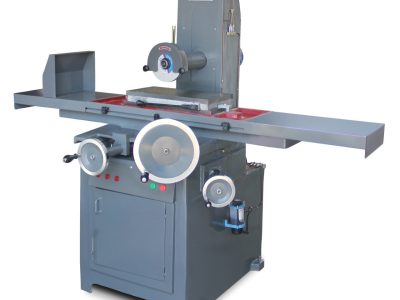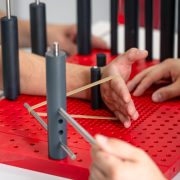In industries where heavy machinery, components, or structures need to be lifted, moved, or installed, safety and precision are of utmost importance. One essential component that plays a crucial role in achieving this is the lifting bracket. A lifting bracket serves as a connecting point between the load and the lifting equipment, ensuring that the weight is distributed evenly and safely during lifting operations. Whether you’re working in construction, manufacturing, automotive, or marine applications, selecting the right lifting bracket can make all the difference between a safe, efficient lift and a costly or dangerous mistake.
What Is a Lifting Bracket?
A lifting bracket is a specially designed metal fitting that allows equipment, structures, or heavy loads to be lifted securely using cranes, hoists, or chains. Typically made from high-strength steel, stainless steel, or alloy materials, lifting brackets are engineered to handle substantial loads under various working conditions. They are commonly welded or bolted onto machinery or components that require regular movement or installation. The design ensures stability, minimizes the risk of detachment, and provides a reliable load-bearing point during lifting.
Importance of Choosing the Right Lifting Bracket
Selecting the correct lifting bracket is vital for operational safety and efficiency. Using the wrong type or size of bracket can lead to accidents, structural damage, or even equipment failure. The right bracket ensures balanced lifting, prevents slippage, and complies with workplace safety standards. In industries where precision and reliability are key, such as aerospace or construction, the lifting bracket’s design, capacity, and quality can directly affect project success.
Top Features to Consider When Selecting a Lifting Bracket
When choosing a lifting bracket for your equipment or application, several features must be carefully evaluated to ensure optimal performance and safety.
1. Load Capacity and Working Load Limit (WLL)
The first and most important factor to consider is the load capacity of the lifting bracket. Each bracket has a specific Working Load Limit (WLL), which indicates the maximum weight it can safely handle. Exceeding this limit can lead to deformation, breakage, or catastrophic failure. Always choose a lifting bracket with a WLL that meets or exceeds the total weight of the load, including any additional forces caused by lifting angles or movement.
2. Material Strength and Quality
Lifting brackets are usually made from carbon steel, stainless steel, or alloy steel. The material selection depends on the type of load and the environmental conditions. For example, stainless steel lifting brackets are ideal for marine or corrosive environments, while high-grade alloy steel brackets are preferred for industrial or high-stress lifting operations. Always ensure the material meets international standards like ASME, ISO, or EN to guarantee durability and performance.
3. Design and Structural Integrity
The shape and design of a lifting bracket directly affect its ability to distribute weight evenly. Look for brackets with reinforced edges, precision-engineered holes, and stress-relieved welds. The bracket’s design should also ensure a firm connection with the lifting equipment and prevent any rotation or bending under load. Some brackets come with gussets or ribs to enhance strength and stability.
4. Mounting Options and Compatibility
Lifting brackets can be bolted, welded, or clamped depending on the application. The right mounting option ensures a secure fit without compromising the structural integrity of the load. For equipment that requires frequent lifting or relocation, bolted brackets are convenient, while welded brackets are suitable for permanent installations. Always ensure that the bracket’s dimensions and hole alignment match your lifting setup for a precise and safe connection.
5. Surface Finish and Corrosion Resistance
The surface finish of a lifting bracket may seem like a minor detail, but it plays a significant role in longevity and performance. Powder-coated, galvanized, or zinc-plated finishes provide extra protection against rust and wear. For outdoor or marine environments, corrosion-resistant coatings extend the life of the bracket and reduce maintenance requirements.
6. Certification and Compliance
Safety should never be compromised. Always ensure the lifting bracket you select complies with relevant safety standards such as EN 13155, ASME B30.20, or ISO 12100. Certified products undergo rigorous testing for load capacity, fatigue resistance, and material strength. Using certified brackets not only ensures safety but also maintains compliance with industry regulations and insurance requirements.
7. Ease of Inspection and Maintenance
A good lifting bracket should be easy to inspect for wear, cracks, or deformation. Regular inspection is crucial for identifying potential issues before they lead to failure. Choose designs that allow easy access to all surfaces, especially around welds and attachment points. A removable or modular bracket design can also simplify maintenance and replacement.
Additional Considerations
Beyond technical specifications, it’s wise to consider practical aspects such as temperature tolerance, load type (static or dynamic), and lifting frequency. In some cases, custom-designed brackets may be needed to accommodate unique load shapes or space constraints. Consulting with a qualified engineer or manufacturer can help ensure you select the ideal lifting bracket for your specific application.
Conclusion
Selecting the right lifting bracket involves more than just checking load capacity—it requires understanding the material strength, design, safety certifications, and compatibility with your lifting system. A well-chosen lifting bracket enhances operational safety, reduces downtime, and prolongs equipment life. Whether you’re lifting machinery, structural components, or industrial materials, investing in high-quality, certified lifting brackets ensures your operations run smoothly and safely every time.
















Comments